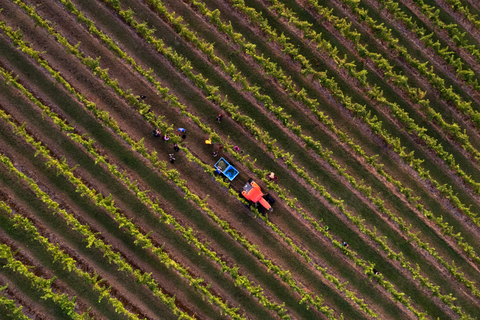
March
As the year progresses, we get ready to wind back the clock and get warmer clothing out of retirement, grab a companion and this month’s bottle: the 2013 Dairy Hill Semillon from one of our favourite Hunter Valley producers, Briar Ridge, and enjoy one last bottle in the later summer sun.
Our first offering from the Hunter Valley, this wine is delicious, well-made and it has that ‘special something’ having spent over 10 years in bottle prior to making its way to you.
Sémillon, a grape with a golden hue, is utilised in the crafting of both dry and sweet white wines, predominantly in France and Australia. Its delicate skin and vulnerability to botrytis fungus contribute to its prominence in the production of sweet wines within the Sauternes AOC and Barsac AOC.
Originating from the Bordeaux region, the Sémillon grape was referred to as Sémillon de Saint-Émilion as early as 1736, a name echoing the local pronunciation of the town. Its introduction to Australia occurred in the early 19th century, and by the 1820s, it dominated more than 90% of South Africa's vineyards, known locally as Wyndruif, meaning "wine grape." Although once acclaimed as the most widely cultivated grape globally, its dominance has waned over time.


In Australia
In Australia, Sémillon thrives, particularly in the Hunter Valley north of Sydney, where it was historically referred to as "Hunter River Riesling." The Hunter Valley boasts a distinctive style of Sémillon characterised by its complex, minerally profile, harvested early to ensure longevity. These wines can either be enjoyed shortly after vintage or aged gracefully in the bottle.
Bottle-aged Hunter Semillons typically display a buttercup-yellow hue, with aromas reminiscent of burnt toast or honey, accompanied by intricate flavours on the palate and a lingering finish, balanced by soft acidity. Younger Hunter Valley Sémillons tend to be dry, showcasing vibrant citrus notes like lemon, lime, or green apple. Examples of top Hunter Semillon can age gracefully for 40 years or more.
Beyond the Hunter Valley, Sémillon is most present in the Barossa Valley and Margaret River. In Margaret River it is generally used in the classic Bordeaux White Blend, blended with Sauvignon Blanc.
The Barossa Valley is home to many of the world’s oldest Semillon vines, including the world’s oldest vineyard planted in 1848. They produce both richer, ripe, more full-bodied oak aged versions and lighter, crisper unoaked styles.
The Hunter Valley, often considered part of Australia's Mediterranean climate zone, actually experiences a humid subtropical climate influenced by the Pacific Ocean. Positioned at a northerly latitude with significant oceanic effects, it stands as one of Australia's warmest and wettest wine regions. Sheltered by surrounding mountains, the valley benefits from cooling ocean breezes crucial for grape cultivation.
Despite this vital cooling, heavy rainfall and occasional cyclonic storms in summer and autumn pose challenges. Summer temperatures consistently exceed 21.1°C (70.0°F), contrasting with winter averages around 14°C (57.2°F). January typically marks the warmest month, while July tends to be the coolest. In January, temperatures rise further inland due to diminished oceanic influence. During the growing season, the area receives around 7.3–7.5 hours of daily sunshine, with diffused sunlight from ocean cloud cover offering protection against heat stress.
Hunter Valley Semillon is considered one of the wine world's enigmas, the unique profile of the grape is attributed to the harsh climate and humidity of the Hunter Valley. These conditions coax this typically low-acid grape to achieve higher acid levels than it does in the cooler climate of Bordeaux. Harvest statistics for Hunter Valley Semillon usually range between 6.8 and 7.4 g/L acidity and 2.8-3 pH, contrasting with Bordeaux where the grape is typically harvested at around 4.8–5.5 g/L acidity and 3.1–3.3 pH.
It is this distinct climate that shapes the Hunter Valley's iconic Semillon. While Semillon is typically characterised as a thin-skinned, neutral grape prone to low acidity and richness, in the Hunter Valley, it evolves over decades into a honeyed wine with toasted biscuit notes and a mineral undertone. Despite being almost always unoaked, a mature Semillon imparts a textural richness akin to wines that have spent years ageing in barrels.



